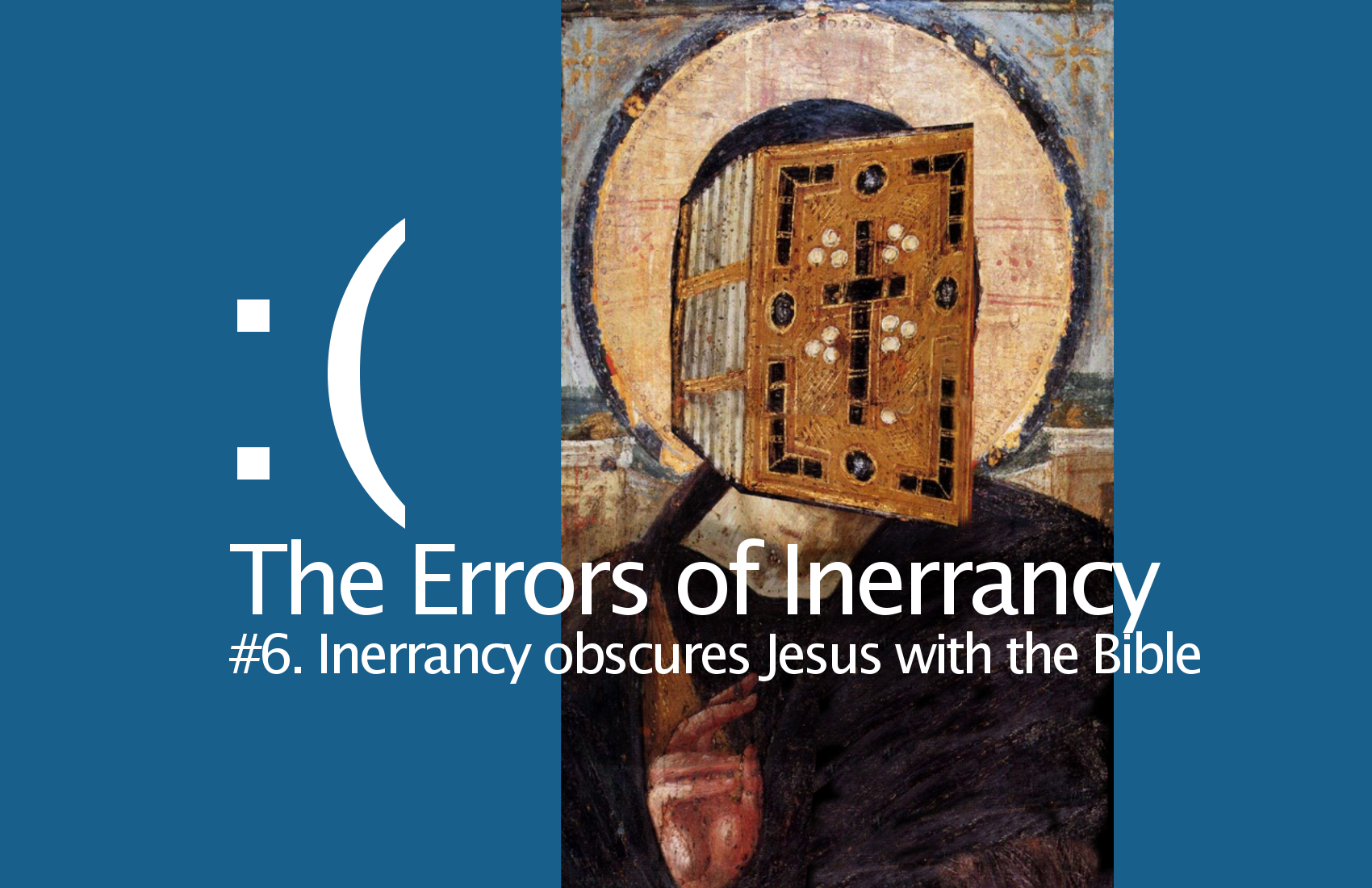 [The Errors of Inerrancy: A ten-part series on why Biblical Inerrancy censors the Scriptures and divides Evangelicals.]
[The Errors of Inerrancy: A ten-part series on why Biblical Inerrancy censors the Scriptures and divides Evangelicals.]
6. Inerrancy obscures Jesus with the Bible
John Calvin said that the Bible is similar to eyeglasses that allow us to see Jesus. If the Bible may be compared to eyeglasses, then Biblical Inerrancy may be compared to smudges and scratches on these eyeglasses, or eyeglasses with bad prescriptions. In other words, Inerrancy does not allow us to see Jesus better, instead it cripples our vision of Jesus, and prevents us from seeing Jesus rightly. These metaphorical scratches and smudges on our eyeglasses (to follow Calvin's analogy) cause us to obsess over the imperfections in our eyeglasses and distract us from seeing Jesus through them. Therefore, the sixth Error of Inerrancy is that Biblical Inerrancy obscures Jesus with the Bible.
Precisely how does Biblical Inerrancy obscure Jesus with the Bible? T.F. Torrance provides an excellent answer to "Protestant fundamentalism" in his book, Space, Time and Resurrection that answers this question. I've summarized and adapted T.F. Torrance's answer in the following four points:
#1. Biblical Inerrancy does not make a proper distinction between the Bible and Jesus.
#2. Inerrancy denies that the Bible is a witness to the life of Jesus.
#3. Inerrancy instead asserts that the Bible contains propositional logic.
#4. Inerrancy does not emphasize the acts and events in the life of Jesus over the written witness of the Bible.
T.F. Torrance's argument against "Protestant fundamentalism" in this instance, also applies to Biblical Inerrancy as defined in this series. Torrance's argument in the following quote, explains how Inerrancy obscures Jesus with the Bible:
Christian doctrines or dogmas are not built up from ideas deduced from biblical statements regarded as logical propositions. The assumption that the Scriptures are impregnated with universal, changeless divine truths which can be read off the sentential sequences of the inspired text, provided that it is properly or authoritatively interpreted, is admittedly the view that was long held, and often still is held by Roman Catholic and Protestant fundamentalism alike.
This has the effect of putting the Scriptures themselves, with the conceptions they enshrine, into the position of providing the direct objects to which the mind of the interpreter or theologian attends, thereby obscuring the actual realities beyond to which he is referred through them. Here we have implied a view of the biblical language as bearing upon the conceptions rather than upon objective realities through conceptions, and a view of truth in which the truth of statement is identified with the truth of being and logical relations are equated with objectively real relations. Such is the nominalism, or extreme realism (for they meet at this point!), inherent in the fundamentalist view that theology is concerned with the systematic connection of propositional truths logically derived from propositional revelation contained in Holy Scriptures.
In scientific theology, on the contrary, we are concerned not with thinking thoughts, far less with thinking statements themselves, but with thinking realities through thoughts and statements, and with developing an understanding of God from his self-revelation mediated to us by the Holy Scriptures in the Church, in which the connections we think are objectively and ontologically controlled by the intrinsic connections of God's self-communication as Father, Son and Holy Spirit. [1]
References:
[^Header Icon] The icon depicted in the Header image is sourced from wikipedia: By Anonymous - [1], Public Domain, Link
[^1] Torrance, Thomas F. Space, Time and Resurrection. Edinburgh: Handsel, 1976. 7-8. Print.
The Errors of Inerrancy: A ten-part series on why Biblical Inerrancy censors the Scriptures and divides Evangelicals:
#1 The Church has never possessed an inerrant Bible
#2 Inerrant Original Autographs are a Tautology of Biblical Inerrancy
#3 Inerrancy Censors the Bible’s Capacity for Error
#4 Inerrancy denies that the Bible contains scientific errors
#5 Inerrancy reduced the Biblical Authors into Ventriloquist Dummies
#6 Inerrancy obscures Jesus with the Bible
#7 Biblical Inerrancy’s Myth-Making Machine, Unveiled
#8 The Protestant Reformers Would Not Affirm Biblical Inerrancy (Martin Luther, John Calvin, et al.)
#9: Inerrancy turns the Bible into a Paper Pope.
#10: Biblical Inerrancy Divides Evangelicals



Leave a comment